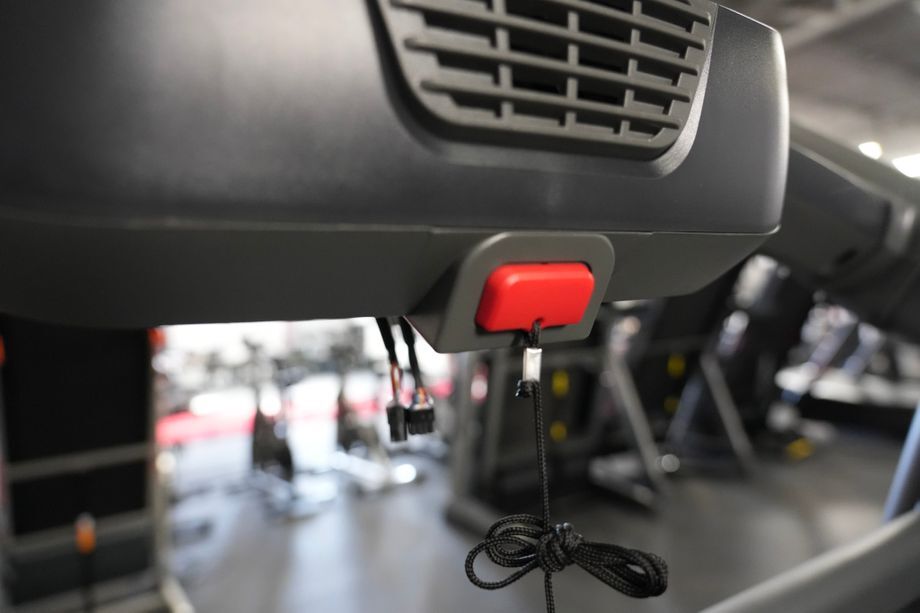Treadmill Workouts for Beginners: Getting Started Safely and Effectively

Embarking on a fitness journey can be exciting yet challenging, especially for beginners. Treadmill workouts provide a convenient and controlled environment for improving cardiovascular health, burning calories, and boosting endurance. To ensure a strong foundation for progress, it’s essential to start safely and effectively.

Now, let’s explore the basics of treadmill workouts and safety precautions in detail, in addition to ensuring you start your treadmill journey on the right track.
I. Treadmill Workout Basics:
Before starting your treadmill workouts, get familiar with the treadmill’s features and controls. Adjust the speed and incline settings to find your comfort level. Maintain proper posture and form by standing upright. Relax your shoulders, and land softly on your feet.

II. Safety Precautions:
1. Warm-up and cool-down:
Always begin with a warm-up and end with a cool-down session, it prepares your body and prevents injury. Spend 5-10 minutes on light cardio or dynamic stretches before and after your workout.
2. Set appropriate speed and incline:
Choose a comfortable level that matches your fitness. Start with a brisk walk or slow jog, gradually increasing as you improve. Avoid overexertion and listen to your body.
3. Use safety features and emergency stops:

Attach the safety clip before starting. It stops the treadmill if you lose balance. Know the location and function of the emergency stop button for quick response.
Now, let’s explore the different phases of a beginner treadmill workout routine. Progress gradually through these phases to build strength, endurance, and confidence for more advanced workouts.
III. Getting Started:
Beginner Treadmill Workout Routine
A progressive approach is key to building endurance and preventing injury. Here’s a suggested three-phase beginner treadmill workout routine:
Phase 1: Walking Program
Begin with a walking program to acclimate your body to the treadmill and establish a foundation for more intense workouts.
– Proper walking technique:
Engage your core muscles, swing your arms naturally, and land softly on your feet.

– Duration and intensity progression:
Start with 10-15 minutes of walking at a comfortable pace. Gradually increase the duration by 5 minutes each week until you reach 30-45 minutes. Monitor your exertion level using the “Rate of Perceived Exertion” scale and aim for a moderate level of intensity (around 5-6 on a scale of 1-10).
Phase 2: Interval Training
Interval training alternates between periods of higher intensity and recovery, calorie burn, and cardiovascular benefits.
Introduction to intervals:

Interval workout structure:
Start with 1 minute of brisk walking or light jogging, and then 30 seconds of recovery walking. Repeat this pattern for 20-30 minutes. As your fitness improves, gradually increase the interval duration and decrease the recovery period.
Phase 3: Progressing to Jogging and Running
After establishing a solid base with walking and interval training, you can gradually transition to jogging and running on the treadmill. Here’s how to do it effectively and safely:
1. Gradual transition:
Begin by incorporating short jogging intervals into your workout routine. Start with 1-2 minutes of jogging followed by a recovery period of walking. Gradually increase the duration of the jogging intervals.z

2. Proper running technique:
Focus on maintaining proper form while running. Keep your body upright, relax your shoulders, and land with a mid-foot strike. Avoid excessive bouncing, as it can increase the risk of injury.
3. Monitor intensity:
As you transition to jogging and running, monitor your exertion level. Use the heart rate monitor to ensure you’re working at a moderate intensity. Aim for a level where you can still carry on a conversation but feel challenged.
4. Incorporate running intervals:
Once you feel comfortable jogging, you can start incorporating running intervals into your workouts. Alternate between periods of jogging and running at a faster pace. For example, jog for 2 minutes and then increase the speed to a run for 1 minute. Repeat this pattern throughout your workout.
5. Gradual progression:

Gradually increase the duration and intensity of your running intervals as your fitness improves. Challenge yourself by extending the length of the running intervals or increasing the speed. However, remember to do it gradually to avoid overexertion and injury.
6. Recovery and rest:
Allow your body adequate time to recover between running workouts. Aim for at least 48 hours of rest before running again. This rest period helps prevent overuse injuries and allows your muscles and joints to recover and adapt.

7. Listen to your body:
Always listen to your body’s signals. If you experience pain, discomfort, or fatigue, it’s important to consult with a healthcare professional or a certified trainer. They can provide guidance and help you modify your training program if necessary.
Conclusion:
By understanding the basics, following safety precautions, and gradually progressing through walking, interval training, and running phases, you can safely and effectively build your endurance and fitness levels.

Remember, the key to progress is consistency and gradual progression. Be patient with yourself and celebrate each milestone along the way. As you continue to build your endurance and strength on the treadmill, you’ll experience the many benefits of running, including improved cardiovascular fitness and a sense of accomplishment.
